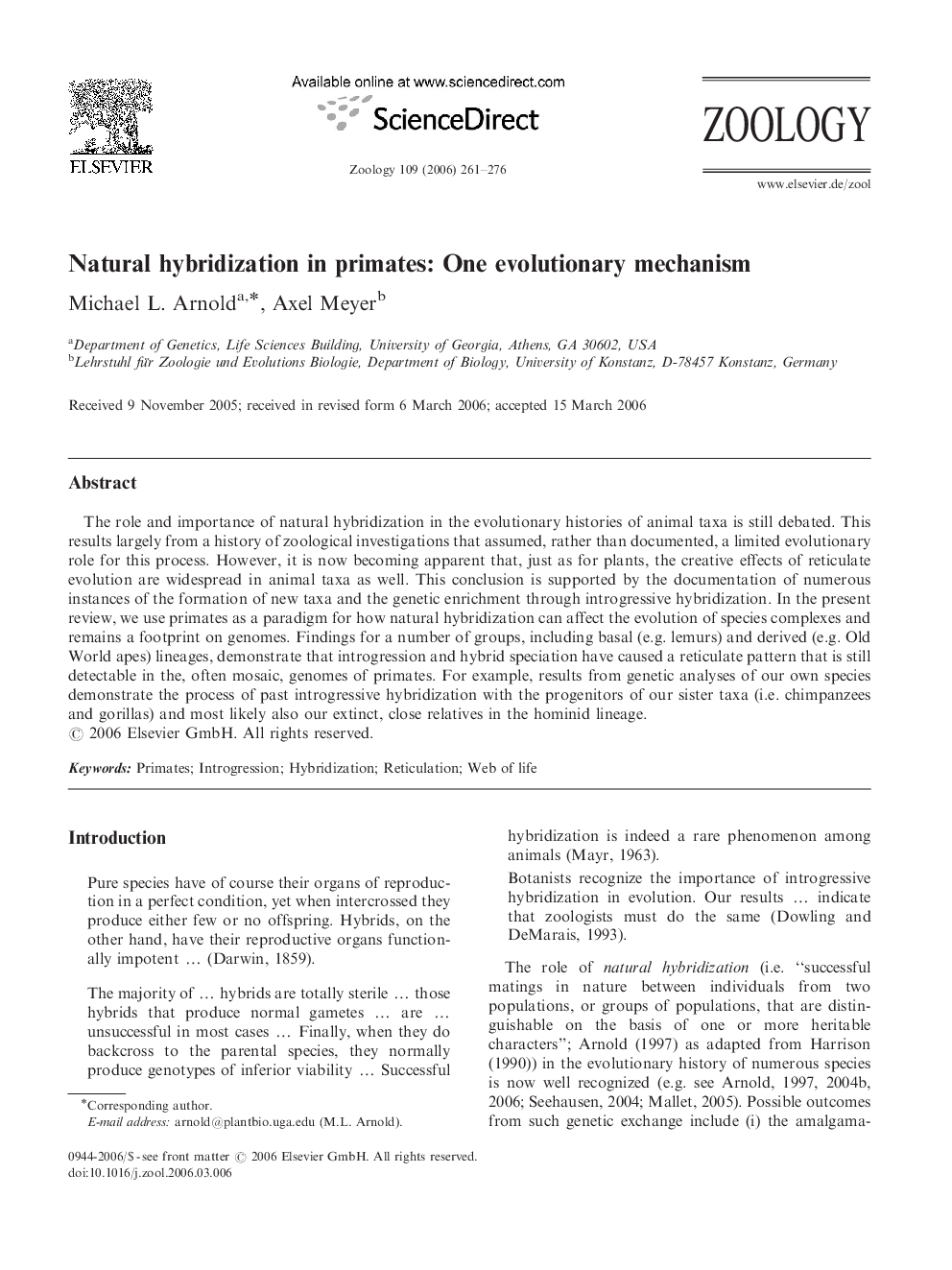| Article ID | Journal | Published Year | Pages | File Type |
|---|---|---|---|---|
| 2791466 | Zoology | 2006 | 16 Pages |
The role and importance of natural hybridization in the evolutionary histories of animal taxa is still debated. This results largely from a history of zoological investigations that assumed, rather than documented, a limited evolutionary role for this process. However, it is now becoming apparent that, just as for plants, the creative effects of reticulate evolution are widespread in animal taxa as well. This conclusion is supported by the documentation of numerous instances of the formation of new taxa and the genetic enrichment through introgressive hybridization. In the present review, we use primates as a paradigm for how natural hybridization can affect the evolution of species complexes and remains a footprint on genomes. Findings for a number of groups, including basal (e.g. lemurs) and derived (e.g. Old World apes) lineages, demonstrate that introgression and hybrid speciation have caused a reticulate pattern that is still detectable in the, often mosaic, genomes of primates. For example, results from genetic analyses of our own species demonstrate the process of past introgressive hybridization with the progenitors of our sister taxa (i.e. chimpanzees and gorillas) and most likely also our extinct, close relatives in the hominid lineage.
